Terry Blake's Tesla Coil
with oil-filled secondary
at
RATCB Teslathon 2003
08/23/03
see the videos
(12/31/03)

Photo courtesy of
Dan McCauley
|
This is a totally excellent shot. There are three things going on here.
|

Super Size (2x) to 400x308 0.6 MB
Super Size (3x) to 600x462 1.3 MB
Super Size (4x) to 800x616 2.3 MB
GIF from photos courtesy of
Dan McCauley
|
This Tesla coil is 25" tall with an acrylic base that is 24" x 24". Orange fiberglass insulators are used for supports and an additional 12" of height. The 4.5"x24"x1/8" acrylic tube secondary is wound with #26 magnet wire for a winding length of 23" (1300 turns). The secondary is enclosed by another acrylic tube (5"x24"x1/8"), with the 1/8" gap filled with mineral oil. The 13 turn, flat-spiral primary is 1/4" copper water tubing, with acrylic supports and base, tuned with a clamp. The capacitor is a 0.03 uF @45 KV Maxwell. The power supply is a 14.4KV (1.5 KVA rated) Potential Transformer (run at about 3KVA). The power supply is protected with dual RC filters plus spark-gap. The R is 2 x 1,000 ohms @ 225 Watts and C is 2 x 500 pF. The Rs get very hot. Current limiting is provided by a 500 foot roll of 12 Gauge wire. An Asynchronous Rotary Spark Gap was used. Propeller style. For safety, the ARSG was shielded with 1/4" polycarbonate sheet and 1/4" tinted acrylic sheet (12"x12"). The acrylic sheet reduces UV light and the polycarbonate (Lexan) sheet should contain a rotor explosion. |
|
Multiple toploads were used (put on top of a 6"x1.75"spun aluminum from John Freau):
Why did I build an oil-filled secondary?
What is up with those plasma plumes?
I think this adds another dimension of interest to a Tesla Coil. I intend to play around with adding more controlled disturbances to the strike-rail to further enhance the plumes. |
These are a mix of photos taken from three different sources.
The filenames are keyed as follows: video (TB_...), my digital camera (P8...), and Dan McCauley's digital camera (dm_...).

Setup by the van. Note alternate primary for bipolar use of secondary.
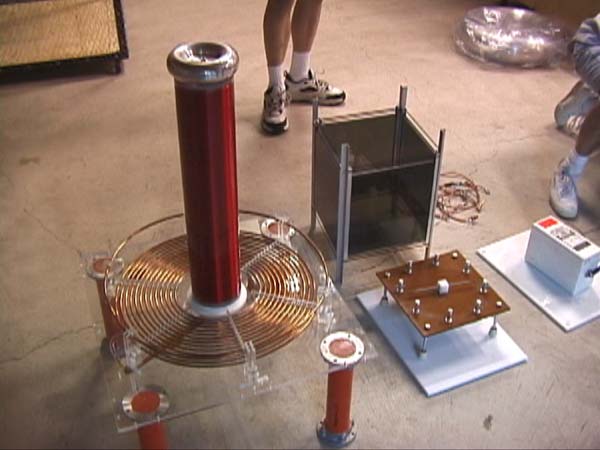
Ready to hook it up. Using clip-leads made from 10ga Monster Cable. Very flexible.
A John Freau 6"x1.75" toroid is used as a base for the other toploads.
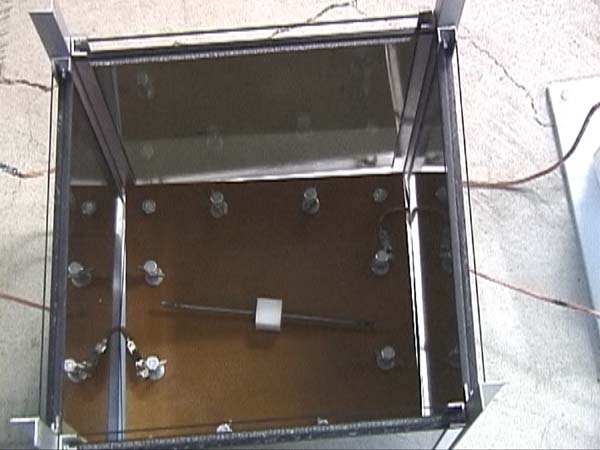
Always put your rotary gaps into an enclosure. This one combines acrylic with polycarbonate.
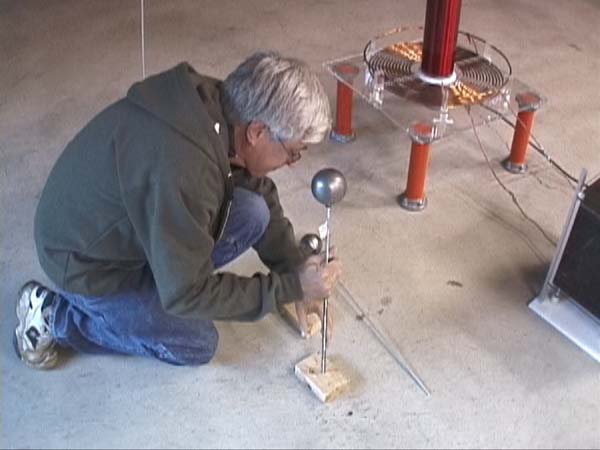
Gotta have some targets. Bill Downs sets up 3 at multiple levels and distances.

Now put on a John Freau 13"x4" toroid. John makes very nice toroids.
I have seen the videos, but I still am amazed at the results.
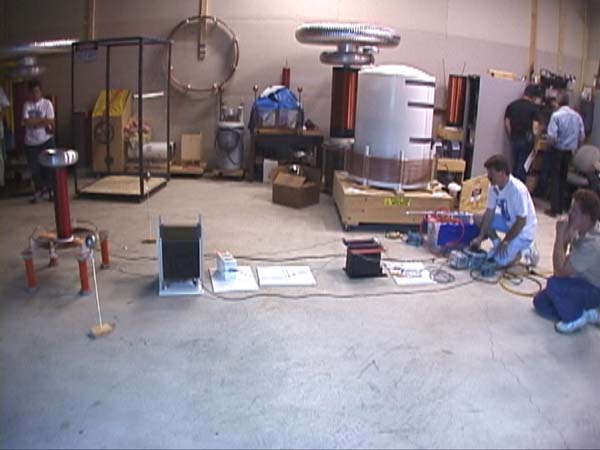
All set up and ready to rock.
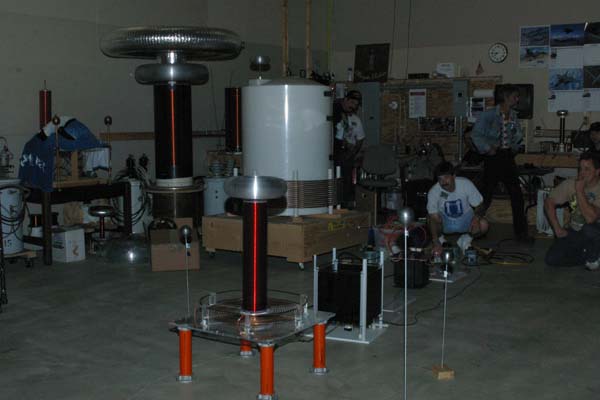
I am wondering if it will actually hit that target to the right?
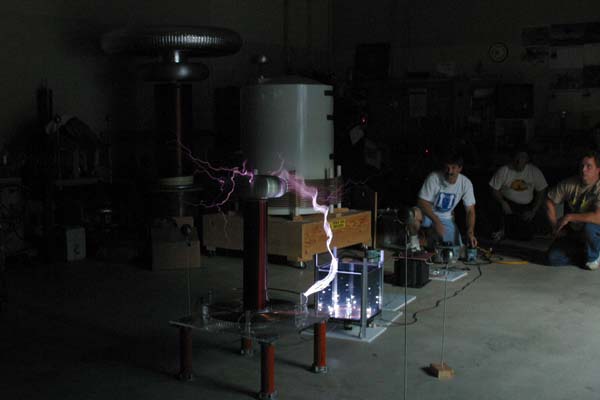
Strike rail. Easy.

Strike rail and first target. Better.

ARSG enclosure. Guess that was a little too close. Hehe.

Oooo. It hit the support. Very close, but no cigar.

Take out the second target. Nice.
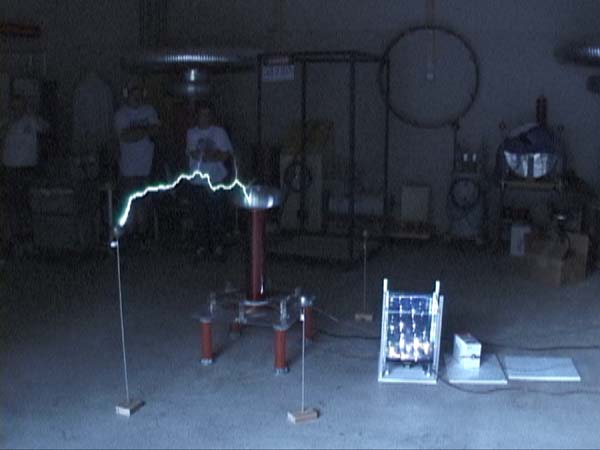
Now back for the killer blow. YES.

OK. Time for the 12" gazing ball.
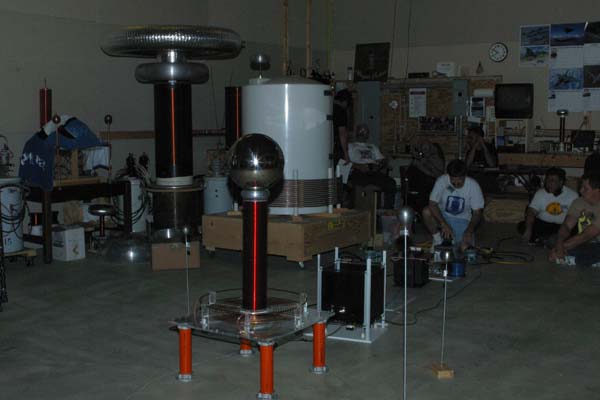
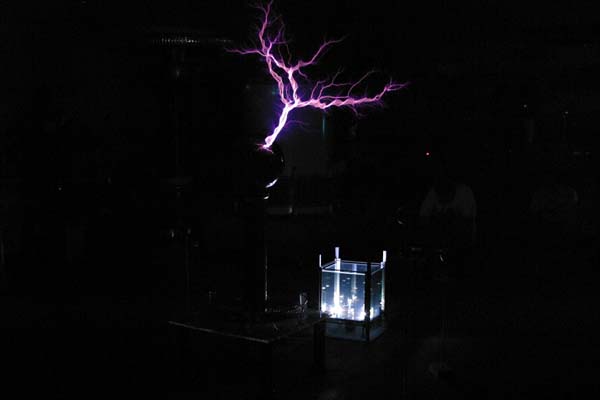
This arc is very different from that of a toroid. It tends to be driven up to the top.
It has no desire to stay on the side, but drifts all over.
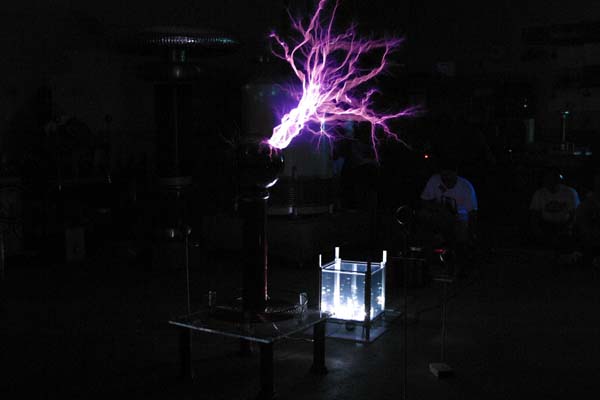
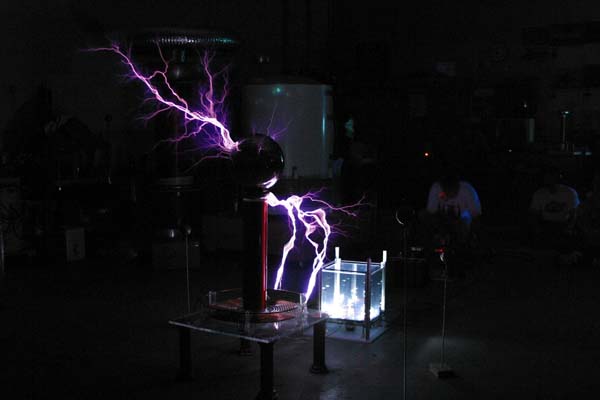
The ball does not shield the smaller toroid very well, and it sometimes breaks out.
But the secondary windings are not getting fried.
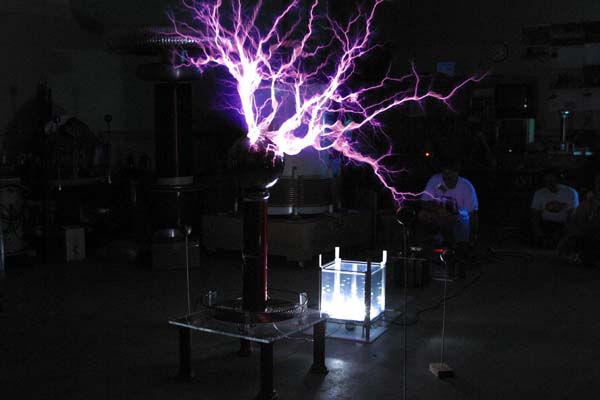
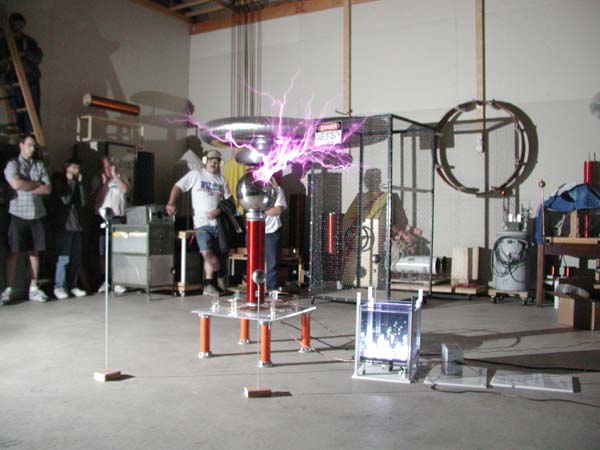

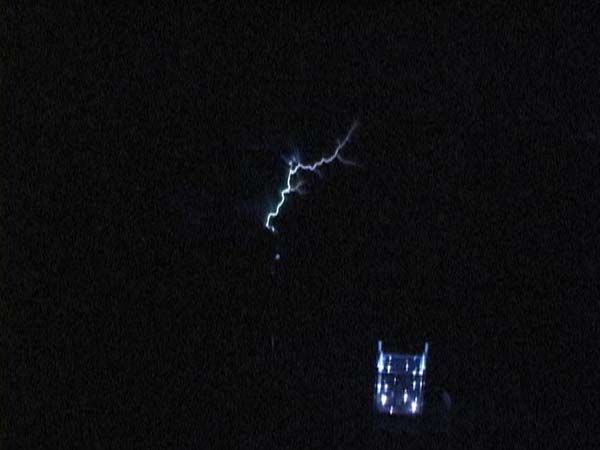

Jeeze. It finally hit something other than the strike rail.
Maybe I could have done a better job tuning for that topload.
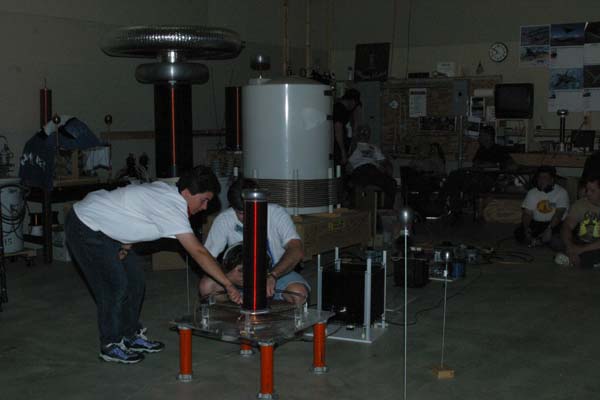
Sue Gaeta showing where she saw some power arcing going on.
Ed Wingate is relaxing way in back.

Now for the big one. The 24" x 6" toroid.
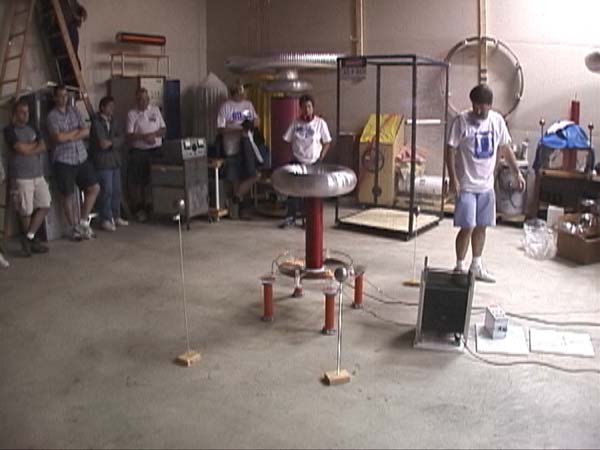
Expecting it to fall off, like last year.
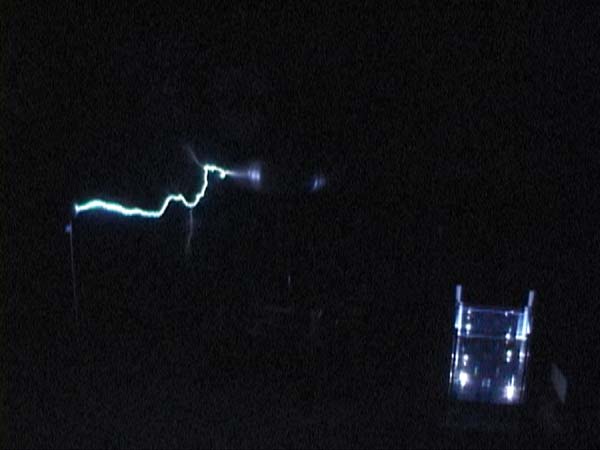
Goes right for the tough one. No problem at all.
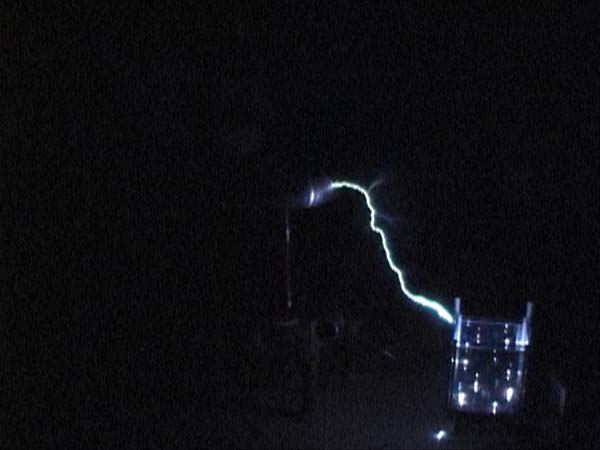
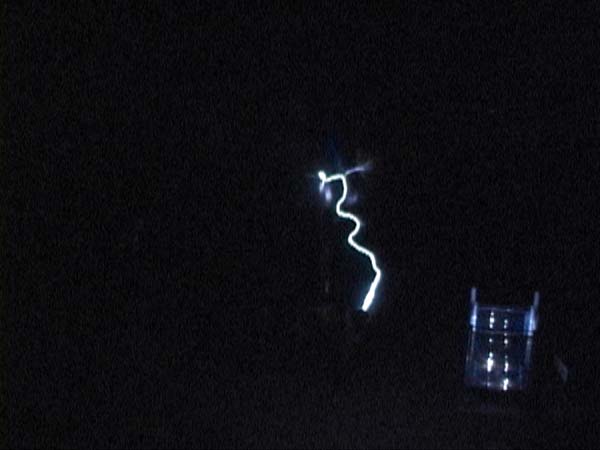


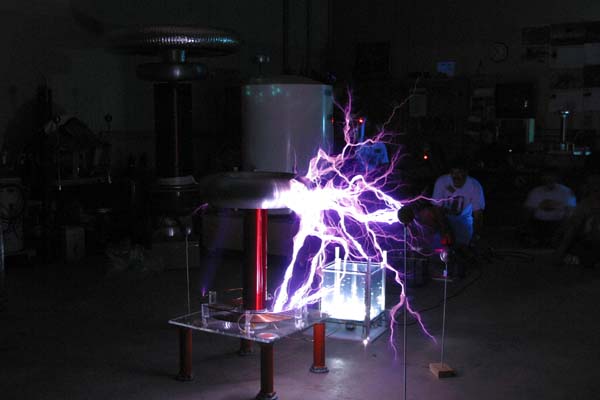
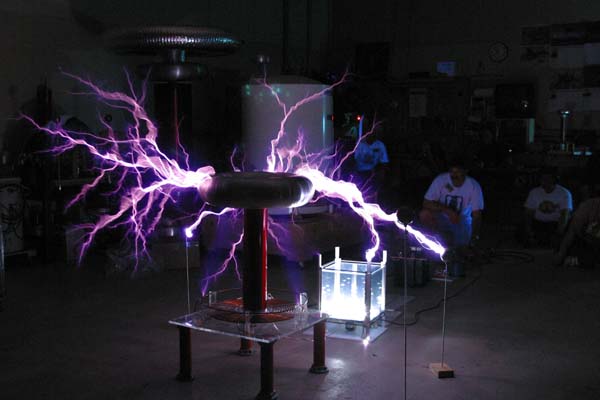
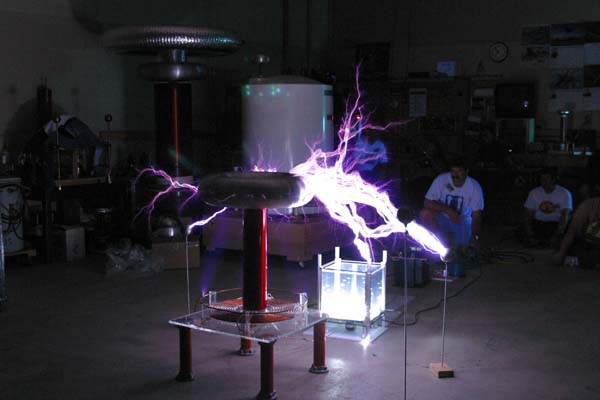

Here's the plasma plumes. Power level is just below spark breakout.
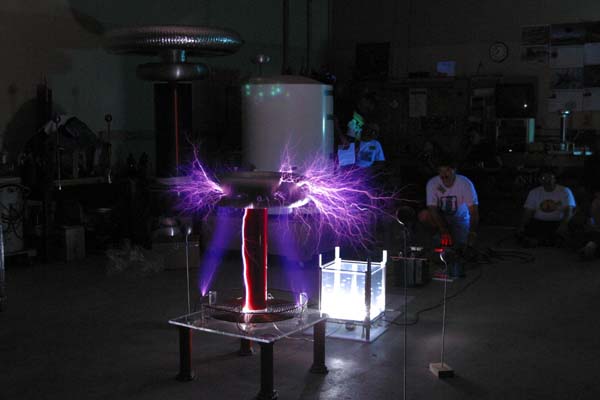
Of course, the fantasic shot Dan got.

John Freau talking shop.

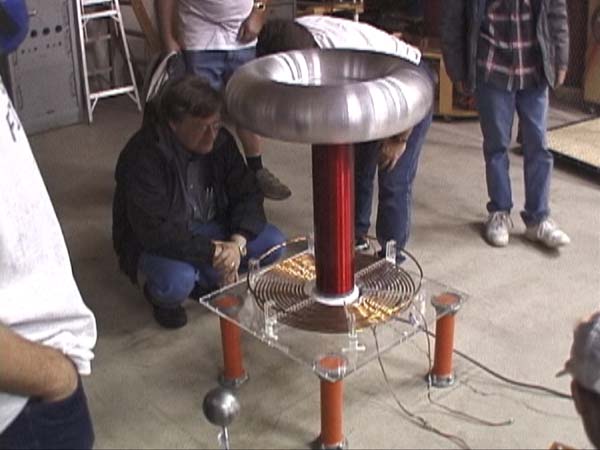
Bert Hickman having a closer look.

The potential transformer. I got about 3 KVA out of it.
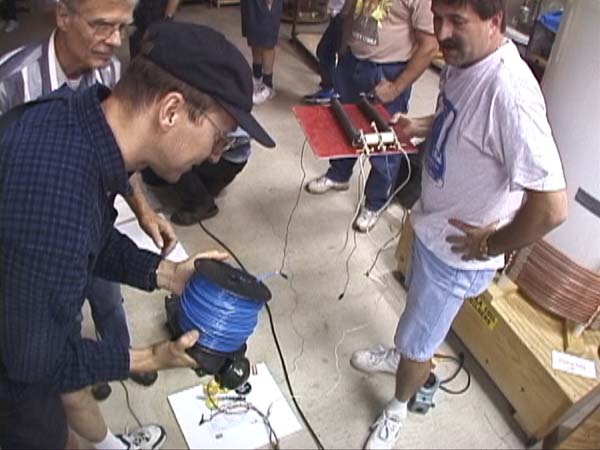
Gary Lau checking for heat buildup in current limiting ballast. It is getting very warm.
These 500 foot spools of 12 gauge work fine at 25 amps for runs up to 5 minutes.
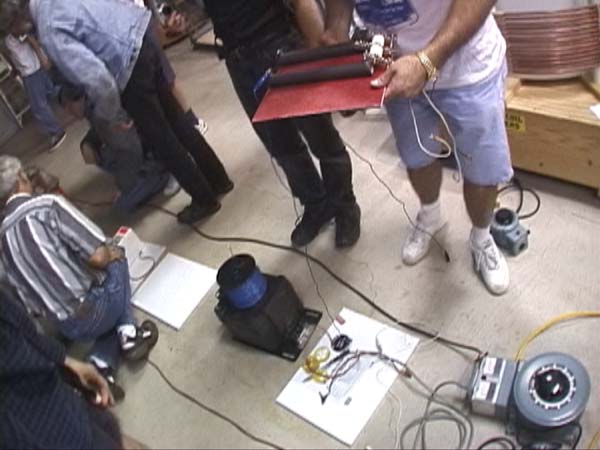
The RC filter network that protects my transformer. The resistors get hot.
Entire photo gallery of my tesla Coil
